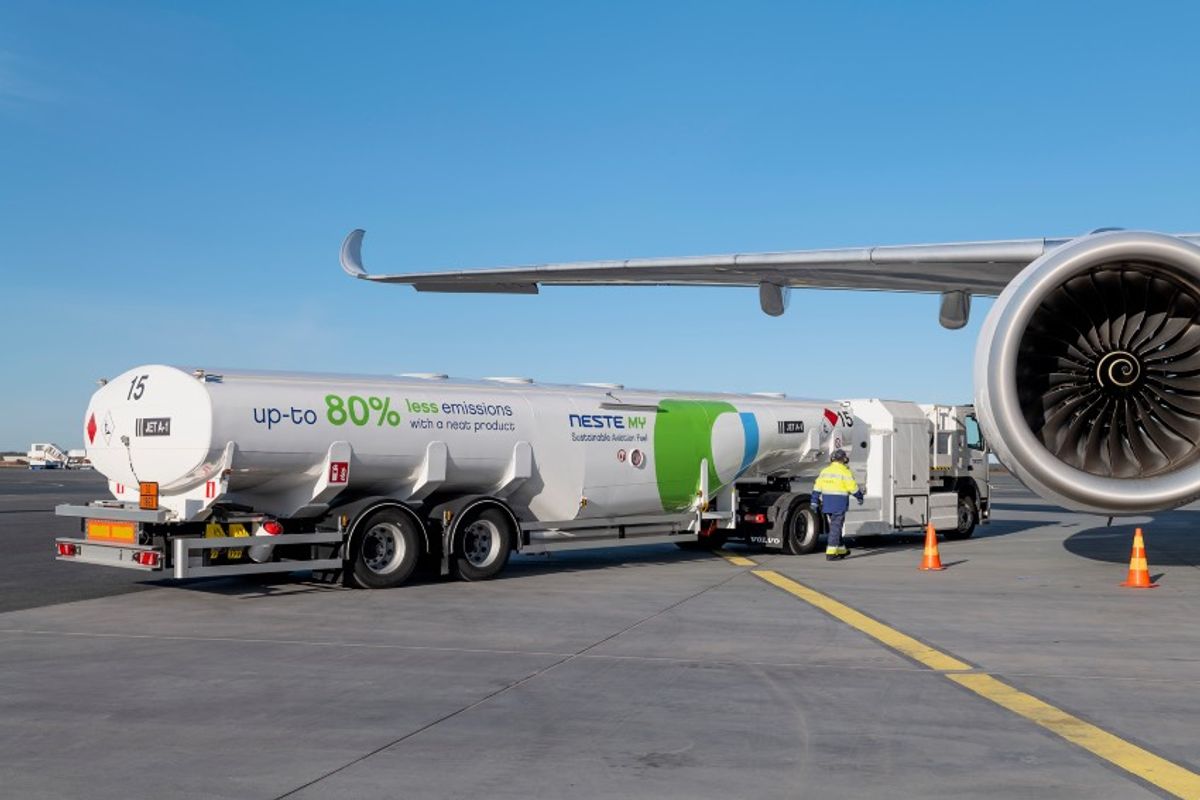EU aviation report shows “significant” decarbonisation progress

Europe’s aviation industry has made “significant progress” towards achieving its decarbonisation goals in the last two years, according to a new report by the European Commission and the European Union Aviation Safety Agency (EASA).
The European Aviation Environmental Report, released on Tuesday (14 January), reviewed the sector’s progress towards the European Green Deal objectives, highlighting “significant developments” in the areas of alternative aviation fuels – which it refers to as ‘sustainable’ aviation fuels (SAF) – and improvements in air traffic management.
Key markers of progress since the commission’s last review, published in 2022, include the ReFuelEU Aviation Regulation with its SAF-blending mandate and the establishment of net zero emissions goals at an ICAO (International Civil Aviation Organization) level. The latter includes a 5 per cent reduction target in CO2 emissions from international aviation by 2030.
The report also pointed to an increase in the number of European airports, from 90 to 118, that have a net zero CO2 emissions target by 2030. Of these, 16 have already achieved their goal.
Key findings 2022-2024
- In 2023, flights departing European airports emitted 133 million tonnes of CO2, which is 10 per cent less than in 2019.
- Single and twin-aisle jets accounted for 77 per cent of these flights and 96 per cent of the CO2 emissions.
- Six per cent of all flights were long-haul (more than 4,000km) and accounted for 46 per cent of the CO2.
- The average mass of CO2 emitted per passenger kilometre reduced to 83 grams in 2023, equivalent to 3.3 litres of fuel per 100 passenger kilometres.
- In 2022, flights departing from Europe represented 12 per cent of all transport GHG emissions and 4 per cent of total GHG emissions across the European Union, European Free Trade Association and the European Economic Area.
According to the report, the SAF production capacity currently under construction across Europe could supply the 3.2 megatonnes of SAF required by 2030 the under ReFuelEU Aviation supply mandate, but would need to “ramp up quickly thereafter”.
SAF prices are currently 3 to 10 times more expensive than conventional fuel, although they are expected to reduce “substantially” as production technologies scale up.
The adoption of “modest” Single European Sky reforms and a revision of the EU Emissions Trading System were also highlighted as recent successes, along with an update to the European Air Traffic Management Master Plan, which includes a 9.3 per cent CO2 emissions reduction target per flight by 2050 (compared to a 2023 baseline).
But more needs to be done to turn sustainability goals into action, as the report warned against the projected growth in air traffic demand.
European air traffic is expected to reach 11.8 million annual flights by 2050, up from 9.9 million in 2023, the report found, but this growth “does not necessarily need to come at the expense of increased emissions,” according to the EU directorate-general for mobility and transport.
The report made a series of recommendations to “decouple” air traffic from environmental impact, which the department stated, “is not only crucial but also achievable”.
EASA executive director Florian Guillermet added: “A concerted effort is required now to manage an orderly transition to cleaner aviation while maintaining a high uniform level of safety and connectivity. Honest, transparent and effective communication is critical to securing the trust of European citizens that aviation is indeed acting to become more sustainable and will meet the future goals,” he said.
These recommendations include the establishment of technology standards to incentivise innovation; implementing effective airport action plans to facilitate access and uptake of SAF through infrastructure investment; improvements to the ‘Balanced Approach’ Noise Regulation for greater consistency across EU member states; and exploring the potential of accounting mechanisms for SAF to facilitate traceability and foster greater transparency.
Related
Brits forced to pay fee to visit these 30 countries…
UK tourists will be required to pay a fee to visit 30 countries in Europe under new European Union (EU) travel rules.The rules mean British holidaymakers will n
The beautiful European island with just 148 locals
Irakleia is a beautiful island in the Minor Cyclades of Greece, nestled in the heart of the Aegean Sea and just an hour away from Naxos. Officially recorded t
Warning issued for Brits flying easyJet and Ryanair to popular…
Passengers flying with Ryanair, easyJet and British Airways should expect disruption (Picture: Urbanandsport/NurPhoto via Getty Images) Passenge










